Poori is a popular Indian puffed bread made with whole wheat flour. It is type of unleavened bread which means it is made without yeast or any raising agent. These delicious poori are enjoyed with gravy dishes, curries pickles and are great option for lunch, weekend breakfast or brunch.
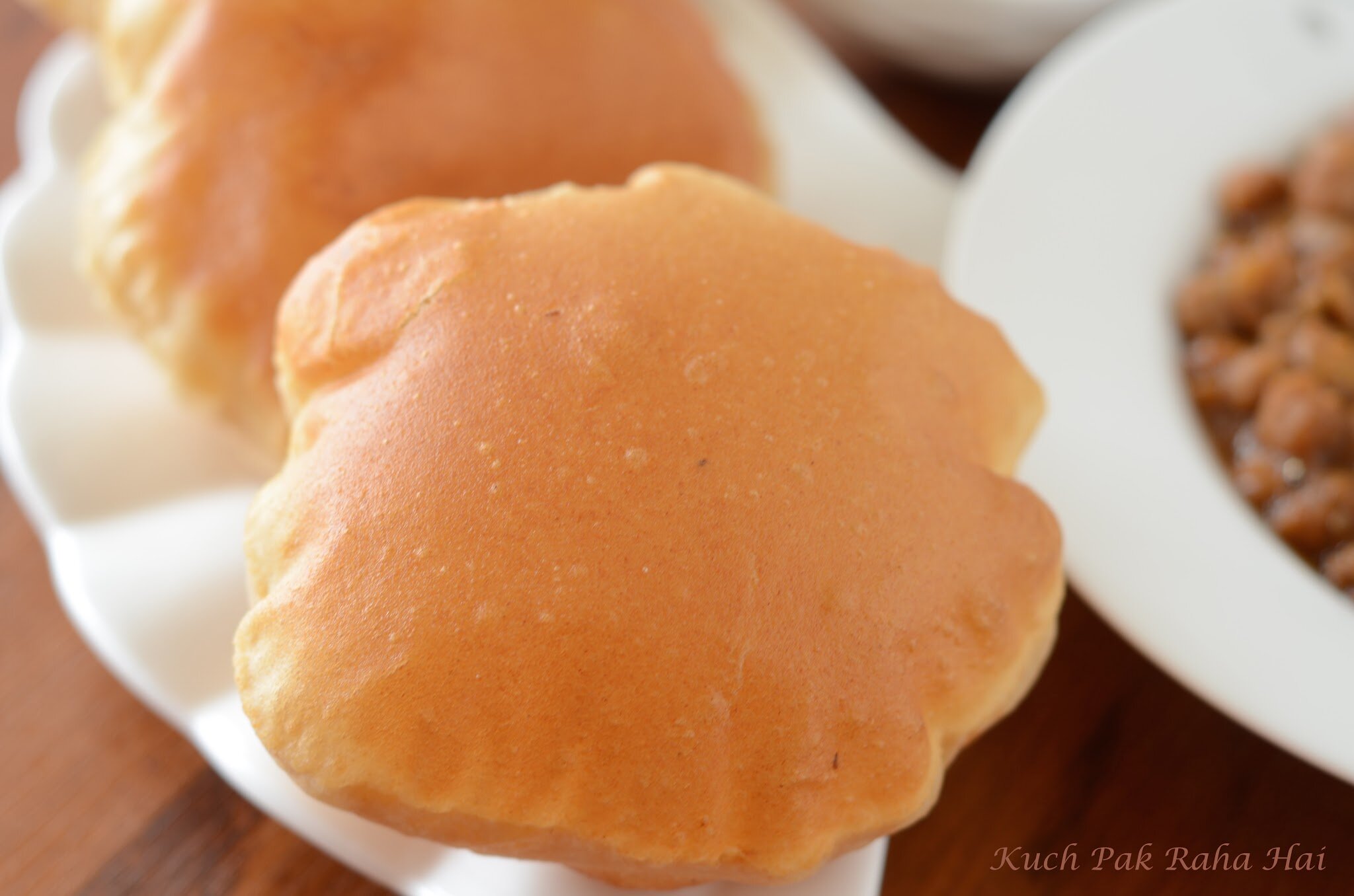
Poori (or Puri) is especially popular in northern parts of India and you will often find in breakfast menus with the name ‘aloo-poori’ (aloo means potatoes) where it is paired with tangy potato-tomato gravy. This deep fried bread is made with just 4 ingredients flour, water, salt, oil or ghee and is known for its crisp exterior & soft texture.
Different regions of India have slightly different versions of poori. For example ‘Luchi’ is made with all purpose flour in Bengal region and in Gujarat spices like red chilli, turmeric and asafoetida are added to make masala poori.
Bedmi poori is yet another popular version in Uttar Pradesh where it is stuffed with spiced lentil mixture. Apart from this, poori can be stuffed with other fillings like spiced peas, potato mash, cauliflower etc or made with gluten free flours. It can also be made in different colours by using spinach or beetroot puree while kneading the dough.
When I was a kid, my mom often packed them in my lunch box with delicious jeera aloo, mango chunda (sweet-sour pickle) and till date I just love this combo. They are also perfect to include in festive menus or for special occasions and can be enjoyed with chana masala, khatta meetha kaddu (pumpkin curry) or shahi paneer.
In Navratri, it is made as prasad on Ashtami or Navmi with sookhe kaale chane and sooji halwa. The poori recipe shared here is-
- Vegan
- Vegetarian
- Made with just 4 ingredients
- Has no yeast or leaving agent
Poori Ingredients:
Flour: To make poori, we will use whole wheat flour also called ‘aata’ in hindi. To give it softer texture, you can use half all purpose flour (maida) and half whole wheat flour but traditionally it is made with only whole wheat flour.
Little bit semolina or sooji is also added to the flour which gives crispy texture to poori. However it is an optional ingredient.
Water: Use room temperature water for kneading the dough. It should be added gradually while kneading as the dough should neither be too soft nor too stiff. It quantity can vary depending on the quality of flour used. To increase the shelf life of poori, it can be kneaded with milk also.
Seasoning: Though only salt will also work fine here but to make poori aromatic, we add some ajwain (carom seeds) which also aids in digestion. Apart from it, other spices like jeera (cumin seeds), a pinch of heeng (asafoetida), kasuri methi or red chilli powder can also be added.
Oil / Ghee: Poori can be deep fried in any cooking oil like sunflower oil, mustard oil or for richer taste you use desi ghee.
How to make poori?
To make puri, we first need knead a tight dough using wheat flour, salt & water. This dough is then divided into small balls, flattened and then deep fried till they puff up.
Making poori is a little tricky as you need to have correct consistency of dough along with proper oil temperature for frying. The dough should be pliable and neither be too hard or nor too soft. If the oil is too hot it will not give poori enough time to cook from inside and if it not hot enough the poori will not puff up.
Tip: To check whether the oil if ready for frying, drop a tiny ball of dough in it and if it comes up thr oil is ready else heat it some more.
Hope you will like this easy poori recipe. More Indian bread recipes:
- Dal Paratha
- Palak Methi Paratha
- Ragi Roti (gluten free)
- Instant Bhatura Recipe
- Singhara Aata Poori (gluten free)
Ingredients:
- Wheat Flour- 3 cups
- Semolina- 2 tbsp
- Salt- 1 tsp (or to taste)
- Ajwain (Carom seeds)- 1 tsp
- Ghee- 2 tbsp
- Oil-For cooking
- Water- For kneading dough
Directions:
Step 1:
Take wheat flour, semolina, salt, Ajwain(carom seeds), 2 tbsp oil or ghee in a mixing bowl.
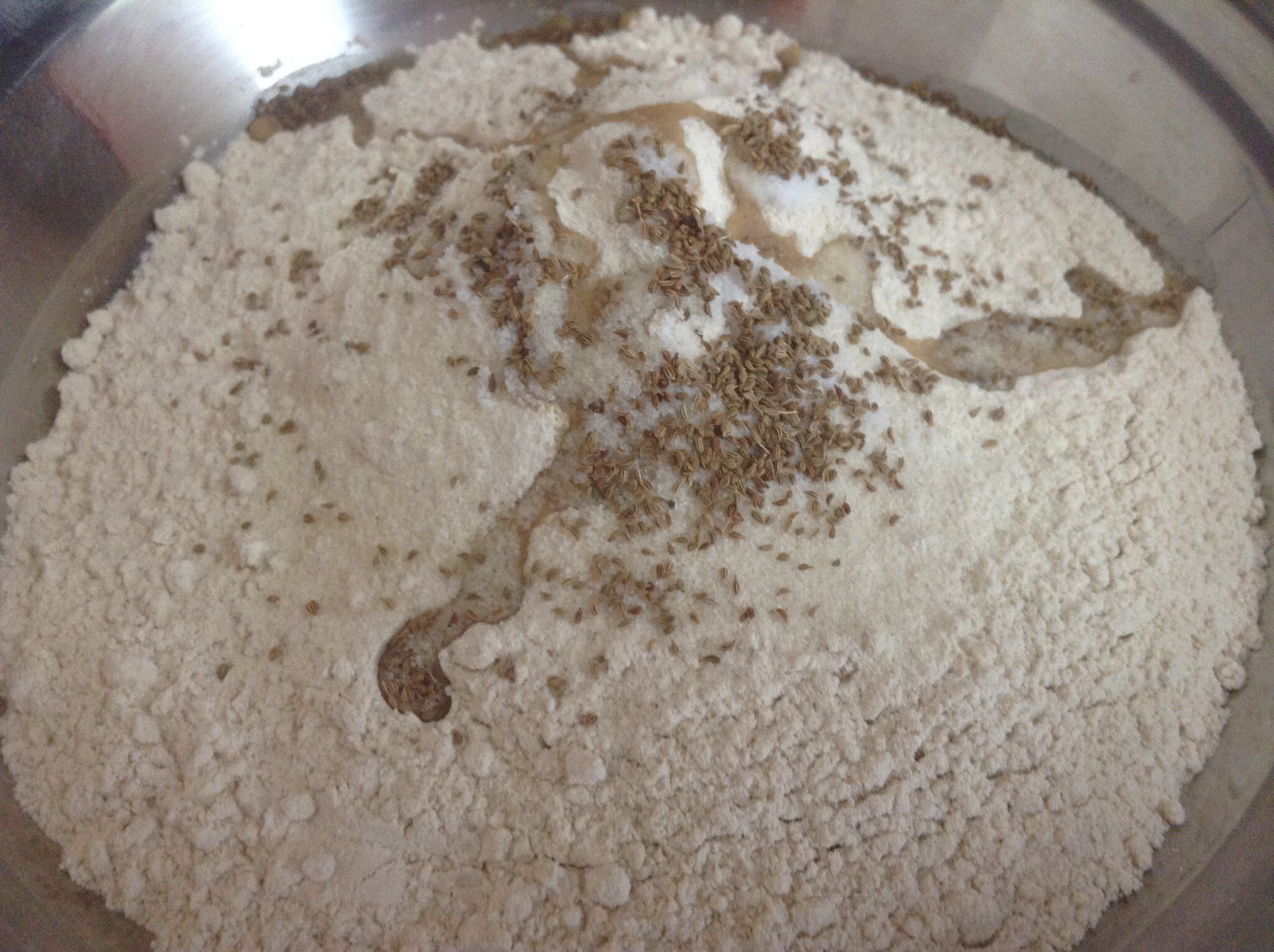
Step 2:
Mix well. Start kneading the dough by gradually adding water to it. The dough should not be very soft or very tight. At the end take some oil in your hands and rub it on the dough. (Before moving to the next step, in the mean time keep the frying utensil in which pooris are to be fried on medium flame so that oil is heated by the time we come to the frying step)
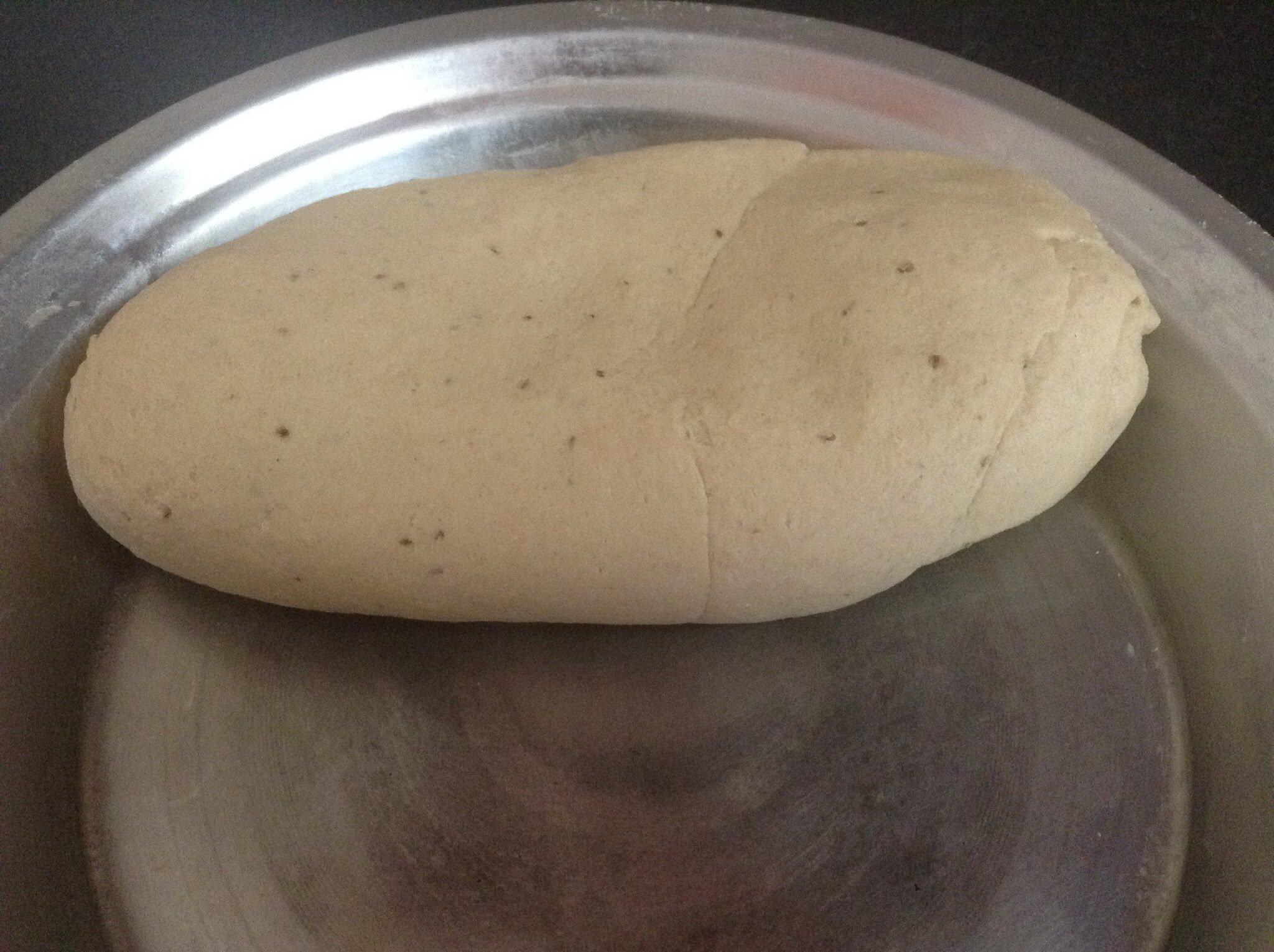
Step 3:
Rub some oil in your hands and make small flat balls out of it.

Step 4:
Apply some oil on the rolling board.Take one ball at a time and start rolling them on the rolling board. Be gentle with the strokes.
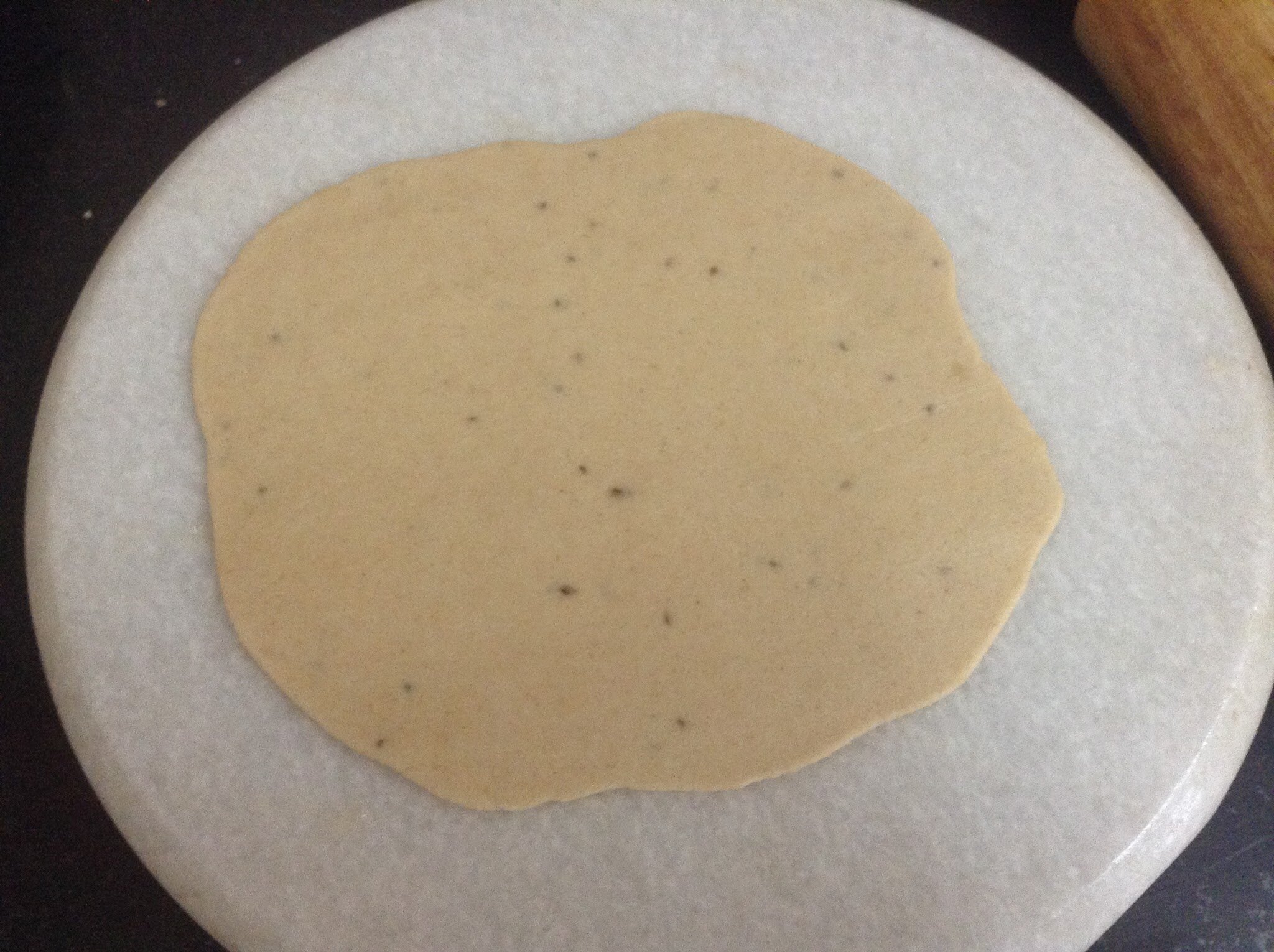
Step 5:
In the frying pan, the oil must have heated by now. The poori which you have rolled as seen in the picture above, lift it up gently and leave it in the frying pan. Slightly press it downwards with the sieving spatula. It will start rising. Turn it in other direction. Take the poori out when it has turned golden brown from both sides. Repeat the step with other flat balls.
Drain the pooris over kitchen tissue to rid of any excess oil. Enjoy them hot with any curry, gravy or pickle of your choice.
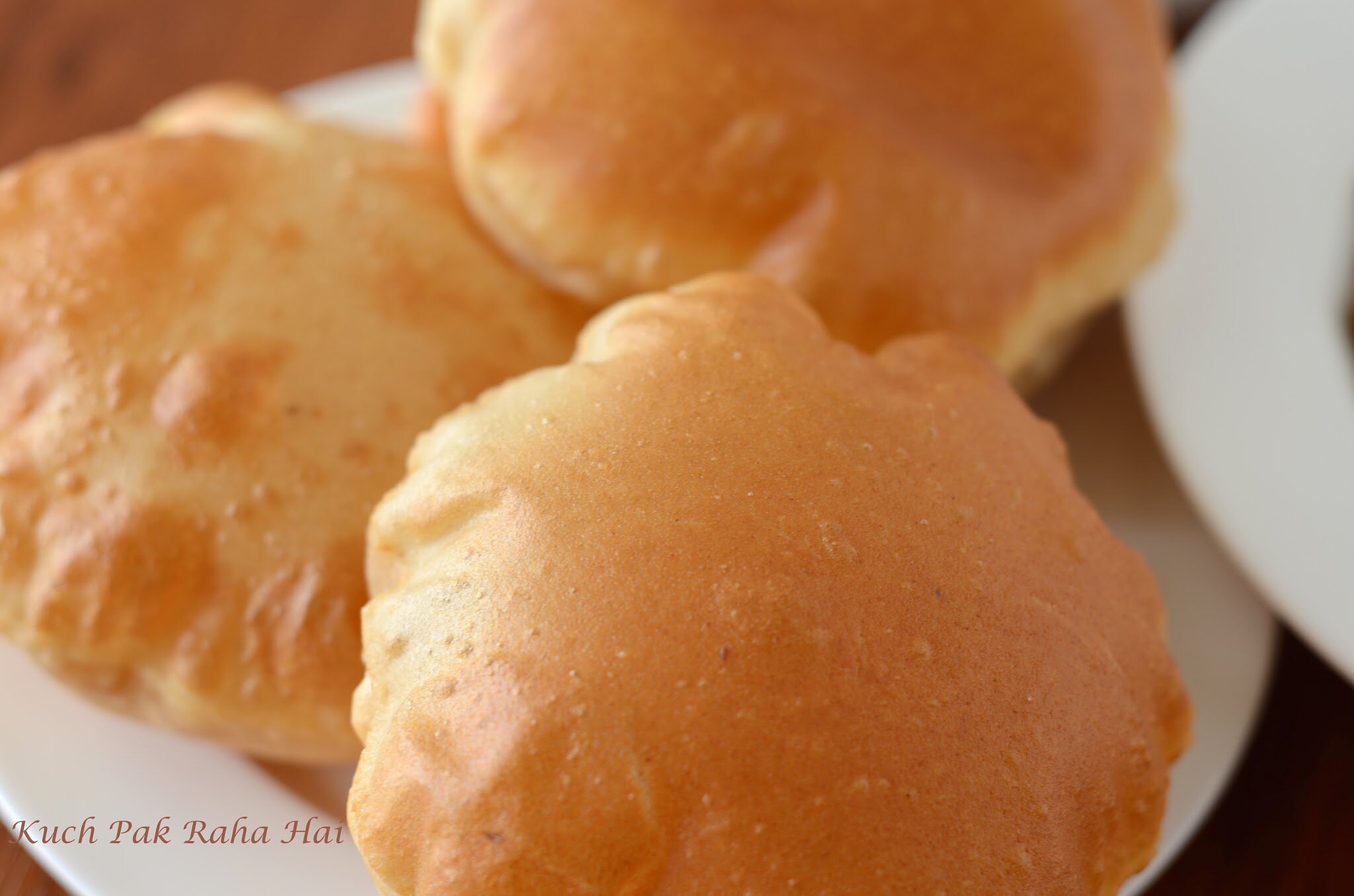
If you try this poori recipe & share pics on social media, then don’t forget to tag on Facebook, Instagram or use #kuchpakrahahai.
Let’s stay connected
Facebook | Instagram | Pinterest| Youtube

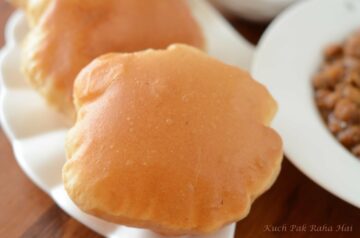

Leave a Reply